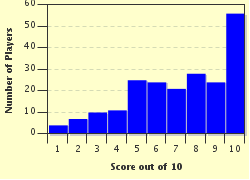Quiz Answer Key and Fun Facts
1. Thomas Cranmer was born in what is now Aslockton near the city of Nottingham. He lived from when to when?
2. Cranmer's parents, although considered gentry, were not wealthy and when they died Thomas' older brother inherited what there was. Thomas entered university to prepare for a career in the church. However, he lost his fellowship at Jesus College, Cambridge in 1522. What was the reason?
3. A chance meeting with Stephen Gardiner and Edward Fox in 1529 brought Cranmer to the attention of King Henry VIII. Gardiner, who was the king's secretary, and Fox had been charged with a mission by the king. What was their mission?
4. In 1531, Cranmer was sent by Henry as ambassador to the court of the Holy Roman Emperor in Germany. While in Germany, he met Lutheran scholar Andreas Osiander. The two men were to share a secret. What was it?
5. In 1532, Henry contrived to have Cranmer appointed to a major post in England. Which one?
6. On June 1, 1533 Cranmer crowned Anne Boleyn Queen of England in an elaborate ceremony in Westminster Abbey. How did the Pope respond?
7. 1536 was a turbulent year in the life of England. What caused the turbulence?
8. Something else happened in 1536 which shows Cranmer in a not very good light. What was it?
9. Henry VIII died in 1547, leaving his nine-year-old son by Jane Seymour as King Edward VI. Cranmer served on the council that acted as the boy king's regents. In 1549, Cranmer produced his masterpiece. What was it?
10. Edward VI died in 1553, to be succeeded by Lady Jane Grey, who was queen for all of nine days before Mary Tudor and her supporters rightfully seized the throne. Cranmer made a fatal mistake in supporting Lady Jane's party, and paid for it with his life. He was burned at the stake as a heretic. Where did this happen?
Source: Author
Cymruambyth
This quiz was reviewed by FunTrivia editor
CellarDoor before going online.
Any errors found in FunTrivia content are routinely corrected through our feedback system.

